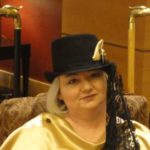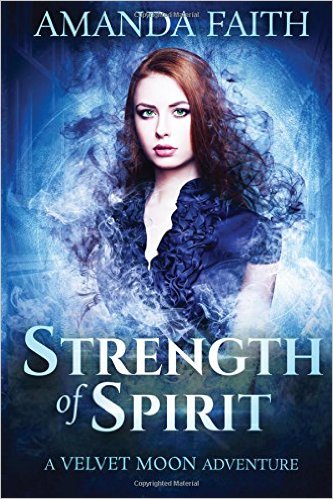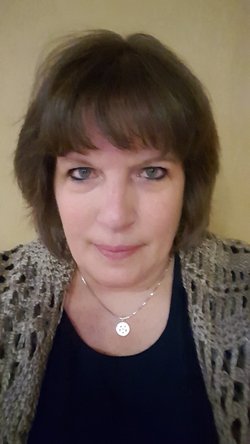Guest post by Jayne Barnard.
It isn’t easy to pull a balance of elements from two genres into a single story. Mysteries need crimes, suspects, red herrings, and character development for motivation. Science fiction and fantasy require questing characters, a reasonably adventurous plot, and a certain amount of world-building as well. Each of those elements absorbs words, and melding them all smoothly into a single narrative – often a short story with a tight word count – can be agonizing. Here are three keys to cutting down the word-wastage and blending the genre elements smoothly:
- Don’t describe anything about the story-world except the facets needed to understand the action. Concentrate on what’s different from the reader’s default Earth-based mental image. Integrate those world-building elements into the characters’ inner thoughts, actions, and dialogue. Even though you, the author, must know what political, social, technological and possibly tectonic elements shaped the physical surroundings, your readers don’t need to know it all. Your readers only need to feel confident that it does fit together in some rational pattern, and that if they asked you, you could tell them. So only describe the bits that they need to know to understand the current story.
In When the Tide Burns (appearing in BURNT, Analemma Press, August 2016), the setting is a barge moored in a garbage-packed cove as the wind is rising. This could be present time, familiar reality for coastal dwellers until the fifth sentence. The soapberry wax, all that protected their clothing and equipment from the acid spray, was down to its last sheen in the tin’s bottom corners. Not such a normal cove after all, but one holding a danger unfamiliar to the readers. The implied menace of the acid spray, combined with the rising wind, are not only effectively alien elements of world-building but introduce a sense of a rising menace against which our protagonist must pit her wits.
- When introducing characters, only describe what makes the alien, orc, or robot different from an ordinary human. Don’t bother with anything about their culture or planet of origin unless it’s vital to the plot of this story. You need to know it all; the reader doesn’t. Again, integrate. Don’t info-dump.
In Quest for Parts (Enigma Front, Analemma Press, 2015) we see what the protagonist sees: a scrawny, pasty, generally human-looking intruder. But… Ignoring the racket, the guy stared into the sky-blue mirror, adjusting a knob at his collar with one claw. His face shimmered, gaining warmer tones while losing the sharp tips to his nose, ears and chin. The lasers in the room shimmered, too, stopping when his face settled. This character has claws, not fingernails, and can adjust his appearance by turning a knob. He’ll need those assets later in the story, so best to slide them into our protagonist’s, and the reader’s, first impression.
- Make some element of your mystery one that could only occur in that particular alternate reality. Stories that could have happened down the block but are set on a space station will not be as engaging as those that require, nay, demand the setting and culture you have created for them.
In MADDIE HATTER AND THE DEADLY DIAMOND, the inciting incident sets this up immediately: The expeditionary airship of Baron Bodmin, ardent African explorer, has been found adrift and deserted. Its log-book is missing and no clue remains to its captain’s fate. A fortnight after its last sighting over the mouth of the Suez Canal, the airship appeared off the coast of Cornwall, floating low and rudderless above the waves. No escape canopy or life-vest remained on board. The batty baron must have vanished from an airship because only airships can stay aloft indefinitely without fuel or a pilot. Exactly where he vanished, and whether by accident, on purpose, or someone else’s design, is the first of many questions for which our intrepid Steampunk reporter must seek answers.
Now to integrate them all. An example from Painted Jade (unpublished) opens with all of the above: Working security on the top side of a conglomerate-built drift makes you a traffic warden in any gated community anywhere. You spend your days petting the dogs and smiling at the nice ladies. Or, if you’re me, trying to reverse that process. Troubles happen way down the bottom, where the ore processors and overcrowded labor force are located. Not my turf. I’m up here with the shiny clean management and their families. Low crime? Try non-existent. So it was unusual, to say the least, to get a morning report about a body bobbing against a pricey porthole high up on C7. A human body, not a stray hunk of rock freed from the asteroid belt. The dome owner objected less to the body proper than to it blocking his view of ore-blasting among the asteroids.
This opening encompasses all three of the keys: world-building, character, and unique element to the crime. The space habitat, the mining industry and the rudiments of a class structure are set out immediately. The point-of-view character’s job and general attitude are on the table up front. No other setting but space allows for the body, and all the evidence the killer left on it, to be perfectly preserved from the moment of disposal. Additionally, the space station serves like one of Agatha Christie’s isolated manor houses: all the suspects and the next possible victims are trapped in one place. The story could not happen anywhere else.
Thus, the essence of a nice, smooth blend of genres: integrate world-building with the lead characters’ actions, which also reveal their attitudes and attributes. Make the crime specific to that world, and the solution unique to those characters.
 Jayne Barnard is a founding member of Madame Saffron’s Parasol Dueling League for Steampunk Ladies and a longtime crime writer. Her fiction and non-fiction has appeared in numerous anthologies and magazines. Awards for short fiction range from the 1990 Saskatchewan Writers Guild Award for PRINCESS ALEX AND THE DRAGON DEAL to the 2011 Bony Pete for EACH CANADIAN SON. Her longer work has been shortlisted for the Debut Dagger in the UK and won the Unhanged Arthur in Canada. You can visit her at her blog, on Facebook or @JayneBarnard1
Jayne Barnard is a founding member of Madame Saffron’s Parasol Dueling League for Steampunk Ladies and a longtime crime writer. Her fiction and non-fiction has appeared in numerous anthologies and magazines. Awards for short fiction range from the 1990 Saskatchewan Writers Guild Award for PRINCESS ALEX AND THE DRAGON DEAL to the 2011 Bony Pete for EACH CANADIAN SON. Her longer work has been shortlisted for the Debut Dagger in the UK and won the Unhanged Arthur in Canada. You can visit her at her blog, on Facebook or @JayneBarnard1

 A guest post by Amanda Faith.
A guest post by Amanda Faith. Teaching high school English by day, college English by night, writing, and doing paranormal investigations doesn’t slow her down from having a great time with a plethora of hobbies. Her published credits include short stories, poetry, several journal articles, her doctoral dissertation, and her award-winning book Strength of Spirit. She is a staff writer for The Daily Dragon at Dragon Con and an intern for Kevin J. Anderson and Rebecca Moesta at WordFire Press. She has a Bachelor of Arts in English, a Masters in Education-English, and a Doctorate in Education-Teacher Leadership. Check out her website at www.amandafaith.net.
Teaching high school English by day, college English by night, writing, and doing paranormal investigations doesn’t slow her down from having a great time with a plethora of hobbies. Her published credits include short stories, poetry, several journal articles, her doctoral dissertation, and her award-winning book Strength of Spirit. She is a staff writer for The Daily Dragon at Dragon Con and an intern for Kevin J. Anderson and Rebecca Moesta at WordFire Press. She has a Bachelor of Arts in English, a Masters in Education-English, and a Doctorate in Education-Teacher Leadership. Check out her website at www.amandafaith.net.
 Take, for example, the best-selling author Marie Corelli. She was read by the masses more than HG Wells, Edgar Allen Poe, and Sir Arthur Conan Doyle — combined. In her book, Vendetta, she introduces the Italian landscape with intricate detail and flowing prose. Everything is richly described that let the readers “see” through the text. Colors, sounds, smells — all were documented to bring the landscape to life.
Take, for example, the best-selling author Marie Corelli. She was read by the masses more than HG Wells, Edgar Allen Poe, and Sir Arthur Conan Doyle — combined. In her book, Vendetta, she introduces the Italian landscape with intricate detail and flowing prose. Everything is richly described that let the readers “see” through the text. Colors, sounds, smells — all were documented to bring the landscape to life. Post-1980’s, the writing landscape changed. People had less time to spend on reading and publishers pushed for stories that started when the action began. Michener and James Clavell would have a tough time getting published these days without their extensive bookselling record.
Post-1980’s, the writing landscape changed. People had less time to spend on reading and publishers pushed for stories that started when the action began. Michener and James Clavell would have a tough time getting published these days without their extensive bookselling record.

